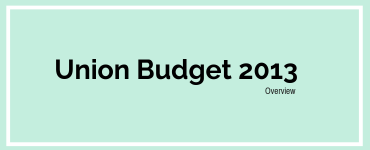Corporate Debt Restructuring (CDR) has always been a widely discussed topic. The recent case of Kingfisher Airlines has again brought it back to limelight, although it has never ceased to be in vogue. Due to slowdown in domestic and global economies, various sectors including power, aviation and textiles are experiencing the pressure to keep themselves afloat. Companies have resorted to internal restructuring as well as corporate debt restructuring to get over the current volatile scenario.
Let’s take the Kingfisher case
Kingfisher, since its onset in 2005, has been facing the pricing pressure due to intense competition and thus has not been able to record any profit. Being a capital intensive industry also added to its woes, with the company bearing the brunt of high borrowing costs.
In 2012, Kingfisher’s total debt increased by Rs 13750 Crs. Unable to service this huge debt, the company approached the lender-banks to seek help substituting high-cost rupee borrowings with lower-cost foreign currency debt and to be considered for CDR. A consortium of 13 banks headed by SBI, holding about 23% stake in the Kingfisher are reviewing the case and recently have rejected the infusion of Rs. 650 Crs. by UB Group to revive the airlines.
This is not the first time Kingfisher has resorted to restructuring of its debt. It escaped collapse in 2010, though then its CDR was part of an aviation industry package, approved by RBI.
So, what exactly is Corporate Debt Restructuring?
Many times firms land up in financial difficulties because of factors beyond their control as well as certain internal reasons. In genuine cases, CDR cell of RBI restructures their loans. This ensures the revival of such firms as well as the safety of money lent by the banks & financial institutions. Corporate Debt Restructuring (CDR) cell of RBI was formed in 2001 to help the Indian companies reduce their debt obligations. A loan account can be referred to the CDR cell when at least 75% of the banks (by value) and 60% of lenders (by number) agree to resolve the case under CDR mechanism.
Corporate Debt Restructuring is a process by which company’s outstanding obligations are reorganized, which raises its ability to meet the obligations. Companies resort to CDR when it is going through financial difficulties and thus unable to service its long term and perhaps short term future responsibilities.
The restructuring of a firm’s outstanding obligations is often achieved through various remedial measures. A few important ones are:
• Reduction of interest rate,
• extension of repayment schedule
• conversion of a part of loan to equity
Wockhardt’s case would make a stellar example. Under the CDR scheme, Wockhardt was granted concessional interest rate of 10%; of which 8% was payable on a monthly basis and rest 2% was converted into preference share capital, which substantially reduced interest costs for the company.
Why are so many Indian Companies opting for CDR?
According to CDR cell data, the steel industry accounts for the largest proportion (24%) of cases referred to the CDR cell, followed by infrastructure (10%), textiles (7%) and telecom (6%).The balance of CDR cases comes from a host of cyclical businesses.
In the past few months, there has been a surge in restructured cases referred to CDR cell. Many companies raised money through foreign currency convertible bonds (FCCB), which seemed a cheaper source of financing then, for their expansion and inorganic growth plans. This was without taking into account the merits of expansion, project viability and technological threats.
However, the actual cash flow generated from the growth plans didn’t meet earlier expectation (pre-recession phase) and was thus insufficient to pay off the debts. Also, due to stock market crash, shares of most of the companies plummeted. A fall in the stock price meant conversion unviable for bond holders. Further, the fall of rupee against the dollar made the debt more expensive. With the economic slowdown, almost all sectors were affected with the result being companies finding difficult to continue operations, let alone make profits. Adding to the prevailing difficult scenario was rise in interest costs, which led the companies to default on their financial obligations. Thus, resulting in sharp increase in CDR cases.
Some of the companies which resorted to CDR include Suzlon Energy, Kingfisher Airline, Wockhardt, Moser Baer, Hotel Leela Venture and ICSA.
Do companies manage to turnaround after availing CDR facility?
Statistics suggest about 85% of the loan restructuring cases referred to CDR cells are able to meet their obligations. And, almost 4 out of every 10 cases are successfully revived.
Wockhardt is a live example of such a turnaround success. Wockhardt hit hard time in 2008, with mark-to-market losses on derivative products and operational losses as well. The Company had Rs 3,800 Cr debt on its balance sheet and a slew of assets acquired during the global boom period. The huge debt, liquidity constraints and adverse market conditions forced Wockhardt to approach the lenders for CDR in early 2009.
The company’s sale of nutrition business to Danone led to lowering of debt on its books with renewed focus on its core operations and streamlining of troubled business areas improved the company’s financials considerably. After posting losses for 8 consecutive quarters, the company managed to bounce back spectacularly and the last 2 quarters especially have shown excellent growth. No wonder then that the share price of the company has gone up almost 6 times since the start of the year.
What saved the company was the decision to sell non-core assets and some infusion of equity by the promoters. The sale of animal health business and nutrition business (to Danone) collectively generated Rs 1297 Cr. of cash, when only Rs 790 Cr. of cash was required as per CDR. Also, equity infusion of Rs 80 Cr. by promoters in accordance with the CDR plan sped up the repayment process.
With renewed focus on core operations and streamlining of troubled business areas, financials of the company improved considerably. After posting losses for 8 consecutive quarters, the company managed to bounce back spectacularly and the last 2 quarters especially have shown excellent growth. Wockhardt’s share price increased from Rs 391.4 in Feb, 2012 to Rs 1685 in Jan 2013, registering a growth of 331%! However, it’s a highly risky game and could lead to significant losses. The downside for companies holding significant tangible assets on book (like Wockhardt) are always higher than those that may not hold such assets (like Kingfisher), as those assets have not been able to generate significant profits for the company.. As a result their share price may witness a greater fall.
So, how do you find out such diamonds from the dust?
During 2011-2012, CDR cell had the highest no of cases filed since its launch in 2001. The no of cases jumped to 84 in 2012 compared to 49 in 2011, valued at Rs 67,889 Cr. Since CDR cell inception, about Rs 1.5 lac Cr. involving 292 companies has been restructured. Net non-performing assets (NPA) of banks increased from about Rs 39,200 Cr. in 2011 to slightly over Rs 60,100 Cr. in 2012, showing an increase of 53.5%. As per RBI, a loan account becomes a NPA after 90 days of continuous non-payments.
Seeing a sharp rise in CDR referrals, a Reserve Bank of India (RBI) committee headed by RBI Executive Director B Mahapatra has recommended further tightening of norms for loan recasts. The increase in restructuring reflects the prevailing and rising stress on corporate India’s credit quality because of lower profitability, weak demand and tight liquidity.
The companies undergoing CDR process have huge debt with liquidity constraints and are usually trading at their all-time low prices. We at MoneyWorks4me have always advised our investors to stay away from high debt companies. In fact screening out high debt companies has always been a part of our robust framework.
With the rise in no of companies going for CDR, investors can be on lookout for some potentially turnaround cases. But the question arises as to how to pick up the potential turnaround stocks?
Following pointers should help to provide a road-map for picking out turnaround cases:
• Companies with sustainable business and strong fundamentals.
• Technical and managerial competencies of the management to turn around operations.
• Viability of the future profitability: Factors to be considered includes the industry in which the company operates, product/service demand, company’s positioning in the industry.
• Factors which contributed to the company’s downfall has to be addressed with actions being taken not to repeat them.
• Possibility of fund generation through either sale of existing assets or divestment of a part of its operations, Wockhardt being a current and successful example.
Thus, if the companies going for CDR has good business prospects and can manage their debt issues, CDR could prove to be a timely respite and fruitful exercise. However, investors need to be careful as each case is unique and even potential turnaround cases may hit roadblocks. It is difficult to predict the business viability of the companies referred to CDR cell and are thus considered as high risk investments.
Only individuals with a high risk appetite should consider investing in these companies and even then it should constitute a very small portion of their investment portfolio.





Excellent write up on CDR
@suresh, thanks. We appreciate your feedback.
I hold the stock at Rs. 17/- and the CMP is Rs. 26/- Should I book profits at current levels?
Dear Sir,
We appreciate your feedback.
If you are a subscriber, please send your specific query to
customercare@moneyworks4me.com. Our customer enchantment executive will get in touch with you.
fantastic article